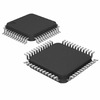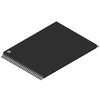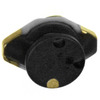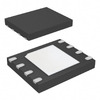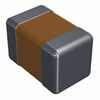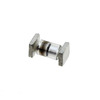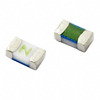Everything You Need to Know About the LPC1769 Microcontroller
The LPC1769 microcontroller is a powerful, versatile chip designed for a wide range of applications, from electronics to automation. In this article, you’ll find everything you need to know about its features, uses, and how to get started with programming it.Catalog
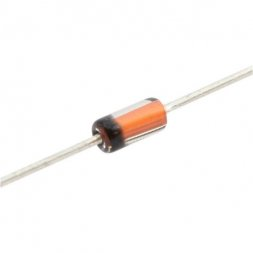
Overview of LPC1769
The LPC1769 is built on an ARM Cortex-M3 core, a design well-suited for embedded applications that demand low power and efficient processing. Operating at frequencies of up to 120 MHz, this microcontroller strikes a balance between performance and energy use. The Cortex-M3 core brings advancements like improved debugging features and enhanced integration, helping support complex applications with ease. Whether in consumer electronics, industrial automation, or small computing tasks, the LPC1769’s architecture provides a flexible foundation that can adapt to various embedded needs.
LPC1769 Pin Configuration
[IMAGE OF LPC1769 Pin Configuration]
LPC1769 CAD Model
LPC1769 Symbol
[IMAGE OF LPC1769 Symbol]
LPC1769 Footprint
[IMAGE OF LPC1769 Footprint]
LPC1769 3D Model
[IMAGE OF LPC1769 3D Model]
LPC1769 Specifications
Technical specifications, features, characteristics, and components with comparable specifications of NXP USA Inc. LPC1769FBD100,551
[TABLE OF Specifications]
Features and Benefits of LPC1769
High-Performance Processor
The LPC1769 is built around an ARM Cortex-M3 processor, running at speeds of up to 120 MHz. This high-performance core lets you run applications smoothly and handle complex tasks efficiently, even in energy-sensitive environments.
Memory Protection Unit (MPU)
The integrated Memory Protection Unit (MPU) supports up to eight memory regions, helping you manage memory access. This feature is especially useful when working on applications that require a structured approach to memory use, helping to keep your programs secure and organized.
Advanced Interrupt Control
With the built-in Nested Vectored Interrupt Controller (NVIC), the LPC1769 efficiently handles multiple interrupts. This controller improves response times for your programs, allowing you to manage multiple tasks and events without delays. It’s particularly helpful for real-time applications, where quick responses are needed.
Application Areas for LPC1769
eMetering
The LPC1769 is well-suited for electronic metering applications, providing the reliability and processing power needed to manage data collection and analysis efficiently.
Alarm Systems
In alarm and security systems, the LPC1769’s capabilities allow it to handle multiple sensors and real-time monitoring, making it a dependable choice for security-focused applications.
Lighting
The microcontroller’s efficient power management and control features make it ideal for lighting systems, where it can handle various lighting controls, dimming, and automation functions.
White Goods
The LPC1769 can be used in household appliances, often referred to as white goods, where it contributes to tasks like motor control and user interface management, helping create more responsive and efficient appliances.
Industrial Networking
For industrial networking, the LPC1769’s processing speed and connectivity options allow it to support communication protocols and manage data across devices, making it useful in connected industrial environments.
Motor Control
In motor control applications, the LPC1769 provides precise control over motors, making it suitable for robotics, automation, and other systems that rely on accurate motor performance.
LPC1769 Application Circuit
For applications where the LPC1769 connects to a USB device, managing the voltage on the VBUS pin is important to ensure safe operation. The maximum voltage allowed on the VBUS pin is 3.6V, so one way to keep it within this limit is by using a voltage divider. This voltage divider adjusts the voltage from the USB connector to a level that works well for the microcontroller.
The voltage divider should be set so that the VBUS pin reads above 0.7 times the VDD voltage to show a logic HIGH but still stays under the 3.6V maximum. Here’s an example setup:
VBUS maximum voltage: 5.25V
VDD: 3.6V
To bring this down, you’ll want a divider that reduces the voltage to around 0.686 of its original level, which aligns it to the limits for proper operation. This setup helps the LPC1769 run smoothly and safely in USB applications.
[IMAGE OF LPC1769 Application Circuit]
Programming Guide for LPC1769
Getting Started with ARM Cortex M3
To begin programming with the LPC1769, you’ll need an understanding of the ARM Cortex M3 architecture, which offers a blend of performance and power efficiency. Familiarize yourself with its basic structure and functions to make the most of your programming experience.
Setting Up the Programming and Debugging Environment
Setting up a suitable environment is the first step. Using an Integrated Development Environment (IDE) like Keil MDK provides the tools necessary to write, compile, and debug your code. Ensure that all necessary software and drivers are installed for smooth operation.
Installing the Driver for CoLinkEx
For proper debugging, install the CoLinkEx driver, which allows your computer to communicate effectively with the LPC1769. This setup enables real-time debugging, helping you address issues as they arise.
Integrating the Plugin with Keil MDK
To streamline your workflow, integrate any required plugins with Keil MDK. This integration allows you to leverage additional features in the IDE, enhancing your coding and debugging process.
Register Configuration (lpc17xx.h)
The lpc17xx.h header file contains definitions and configurations specific to the LPC17xx series. Including this file in your project provides you with access to important register configurations, making it easier to manage input/output operations and system settings.
Creating a Project in Keil uVision4 for LPC1769
Using Keil uVision4, you can create a dedicated project for the LPC1769. This setup will serve as the foundation of your code, allowing you to organize and manage files related to your program efficiently.
Configuring GPIO Pins with PINSEL
The PINSEL register allows you to select and configure GPIO pins based on your project needs. With PINSEL, you can easily assign specific functions to each pin, helping control the microcontroller’s connections.
Setting Up GPIO Direction with FIODIR
The FIODIR register controls the direction of each GPIO pin. Using FIODIR, you can specify whether a pin functions as an input or output, a critical step in defining how your program interacts with the external environment.
Package Outlines for LPC1769
[IMAGE OF LPC1769 Package Outline]
Manufacturer of LPC1769
NXP Semiconductors, headquartered in Eindhoven, Netherlands, is the manufacturer behind the LPC1769. Known for its focus on the automotive and secure connectivity markets, NXP supports a wide range of applications in industries worldwide. With about 31,000 employees across 35 countries and a strong engineering presence, NXP continually develops products that meet modern electronic needs, from everyday consumer devices to specialized industrial applications. The LPC1769 reflects NXP’s commitment to delivering microcontrollers that are versatile, reliable, and widely applicable across technology sectors.
Parts with Similar Specifications to LPC1769
The parts on the right have specifications similar to the NXP USA Inc. LPC1769FBD100,551
[TABLE OF Parts with Similar Specs]
Frequently Asked Questions [FAQ]
1. What is the LPC1769 used for?
The LPC1769 is an ARM Cortex-M3-based microcontroller designed for embedded applications. It is ideal for projects that need reliable, low-power processing, like those found in consumer electronics, industrial automation, and home appliances. Its efficient architecture and flexible features make it suitable for a range of applications that demand consistent performance.
2. How is the LPC1769 different from the LPC1768?
The main difference between the LPC1769 and the LPC1768 is their operating speed. The LPC1769 can run at up to 120 MHz, while the LPC1768 operates at up to 100 MHz. This difference in speed makes the LPC1769 a better option for applications that benefit from faster processing.
3. How does the LPC1769 connect to GPRS equipment?
To connect the LPC1769 to GPRS equipment, you need to power the GPRS module correctly and connect it through the appropriate input/output (I/O) pins on the LPC1769. By configuring these pins in the software, you can control the GPRS module to handle communication functions as needed.
À propos de nous
ALLELCO LIMITED
Lire la suite
Enquête rapide
Veuillez envoyer une demande, nous répondrons immédiatement.
Questions fréquemment posées [FAQ]
1. What is the LPC1769 used for?
The LPC1769 is an ARM Cortex-M3-based microcontroller designed for embedded applications. It is ideal for projects that need reliable, low-power processing, like those found in consumer electronics, industrial automation, and home appliances. Its efficient architecture and flexible features make it suitable for a range of applications that demand consistent performance.
2. How is the LPC1769 different from the LPC1768?
The main difference between the LPC1769 and the LPC1768 is their operating speed. The LPC1769 can run at up to 120 MHz, while the LPC1768 operates at up to 100 MHz. This difference in speed makes the LPC1769 a better option for applications that benefit from faster processing.
3. How does the LPC1769 connect to GPRS equipment?
To connect the LPC1769 to GPRS equipment, you need to power the GPRS module correctly and connect it through the appropriate input/output (I/O) pins on the LPC1769. By configuring these pins in the software, you can control the GPRS module to handle communication functions as needed.
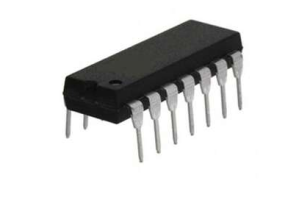
Integrating MC1413 in Electronic Projects
sur 2024/11/14
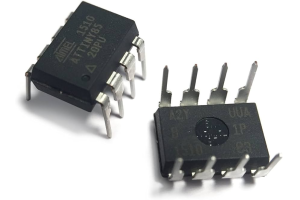
Everything You Need to Know About ATTINY85 Microcontroller
sur 2024/11/14
Articles populaires
-

Qu'est-ce que GND dans le circuit?
sur 1970/01/1 3216
-

Guide du connecteur RJ-45: codes de couleur du connecteur RJ-45, schémas de câblage, applications R-J45, feuilles de données RJ-45
sur 1970/01/1 2778
-
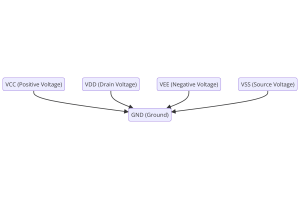
Comprendre les tensions d'alimentation en électronique VCC, VDD, VEE, VSS et GND
sur 0400/11/19 2508
-

Types de connecteur de fibre: SC vs LC et LC vs MTP
sur 1970/01/1 2229
-

Comparaison entre DB9 et RS232
sur 1970/01/1 1849
-
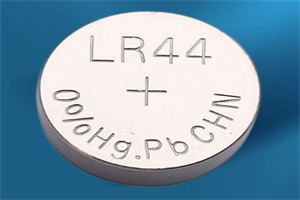
Qu'est-ce qu'une batterie LR44?
L'électricité, cette force omniprésente, imprègne tranquillement tous les aspects de notre vie quotidienne, des gadgets triviaux aux équipements médicaux potentiellement mortels, il joue un rôle silencieux.Cependant, saisir vraiment cette énergie, en particulier la façon de les stocker et de le produire efficacement, n'est pas une tâche facile.C'est dans ce contexte que cet article se co...sur 1970/01/1 1822
-

Comprendre les principes fondamentaux: résistance à l'inductance et connexion
Dans la danse complexe de l'ingénierie électrique, un trio d'éléments fondamentaux occupe le devant de la scène: inductance, résistance et capacité.Chacun porte des traits uniques qui dictent les rythmes dynamiques des circuits électroniques.Ici, nous nous lançons dans un voyage pour déchiffrer les complexités de ces composants, pour découvrir leurs rôles et utilisations pratiques dis...sur 1970/01/1 1776
-

Guide complet de la batterie CR2430: spécifications, applications et comparaison avec les batteries CR2032
Qu'est-ce que la batterie CR2430?Avantages des batteries CR2430NormeApplications de la batterie CR2430CR2430 équivalentCR2430 vs CR2032Taille de la batterie CR2430Que rechercher lors de l'achat du CR2430 et des équivalentsFiche de données PDFQuestions fréquemment posées Les batteries sont le cœur des petits appareils électroniques.Parmi les nombreux types disponibles, les cellules de monnai...sur 1970/01/1 1756
-

Qu'est-ce que RF et pourquoi l'utilisons-nous?
La technologie de radiofréquence (RF) est un élément clé de la communication sans fil moderne, permettant la transmission des données sur de longues distances sans connexions physiques.Cet article plonge dans les bases de la RF, expliquant comment le rayonnement électromagnétique (EMR) rend possible la communication RF.Nous explorerons les principes de la DME, la création et le contrôle d...sur 1970/01/1 1744
-

Guide complet de la HFE dans les transistors
Les transistors sont des composants cruciaux dans les dispositifs électroniques modernes, permettant une amplification et un contrôle du signal.Cet article se plonge sur les connaissances entourant HFE, y compris comment sélectionner la valeur HFE d'un transistor, comment trouver HFE et le gain de différents types de transistors.Grâce à notre exploration de HFE, nous comprenons une compréhe...sur 5600/11/19 1733


